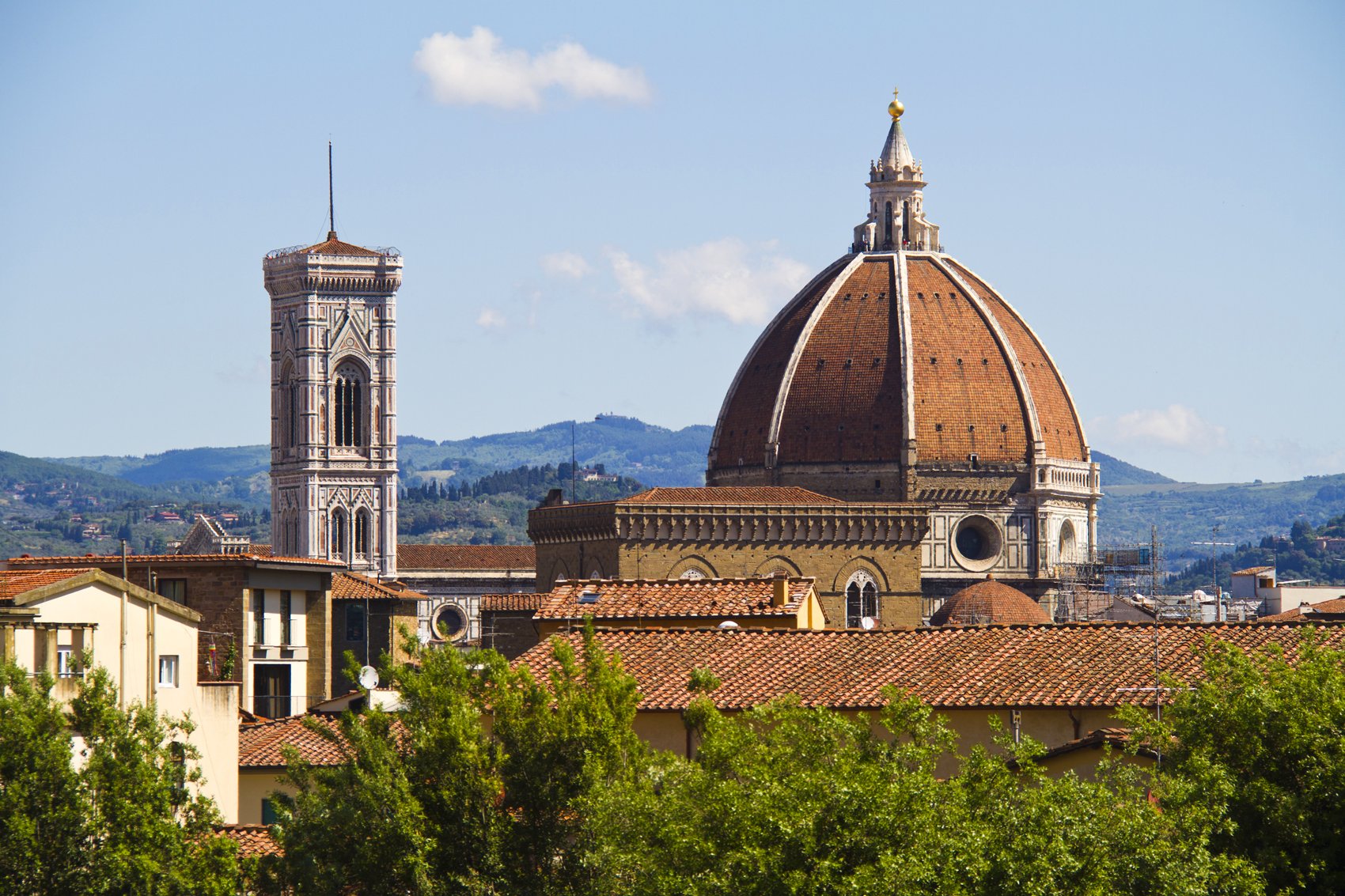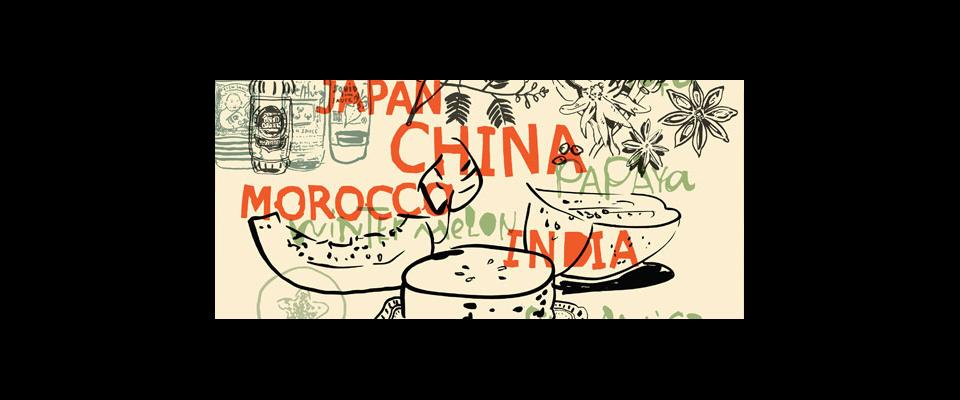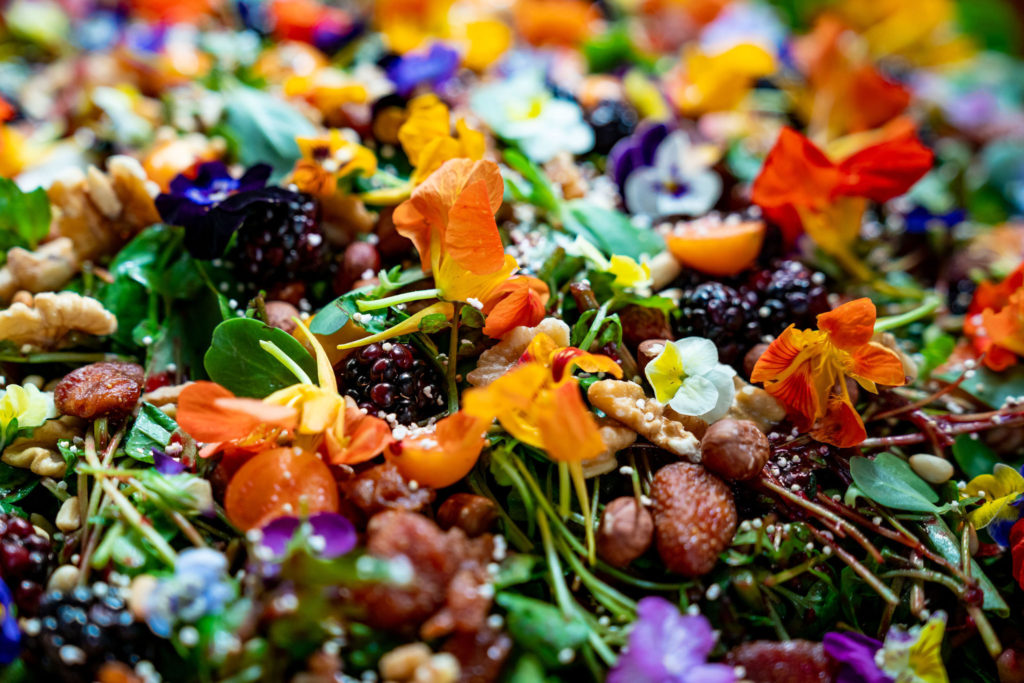California cuisine has turned into crossroads cuisine.
My sister and I were strolling down Larkin Street in San Francisco recently when there wafted a pungent, salty aroma from an open window above. I was about to name the dish, but the couple walking ahead of us beat me to it. “Hmm, I smell fish sauce,” said a blonde woman who looked to be in her mid-20s. “Yup,” agreed her male companion with tattoos on both arms. “With lots of pepper—and a little burnt.”
We had reasons to laugh. First, he was right on the nose, so to speak. Second, when we first came to San Francisco from Vietnam more than three decades ago, my grandmother made catfish in a clay pot, and our Irish neighbors complained about “a toxic smell.” Mortified, our family apologized and kept our windows closed whenever Grandma prepared some of her favorite recipes.
Many years passed. Grandma’s gone. But I’m confident that, if she were still here, she would appreciate knowing that what was once considered unsavory (or even toxic) and a reminder of how different my immigrant family was, has become today’s classic. For in California, private culture has—like sidewalk stalls in Chinatown selling bok choy, string beans, and bitter melons—a knack for spilling into the public domain, where it becomes a shared convention.
Or put it this way: the Californian palate has shifted along with the state’s demographic, where more than one in four is now an immigrant. At last count, Census 2000, 112 languages were spoken in the Bay Area alone. On warm summer afternoons, Nob Hill, where I live, turns into a modern Tower of Babel. The languages of the world—Chinese, French, Spanish, German, Russian, Thai, Japanese, Hindi, Vietnamese, and many more I do not recognize—echo from the street, accompanied by assorted cooking aromas. Within a four-block radius from my home, I can experience Thai, Chinese, Spanish, Vietnamese, Moroccan, Indian, French, Mexican, Greek, Italian, and Japanese food—not to mention the regular fare at diners and seafood houses.
To live in California these days is to live at the crossroads of a global society and a global table. On its April 16, 2006, front page, the San Francisco Chronicle declared, “America’s mean cuisine: More like it hot—From junk food to ethnic dishes, spicy flavors are the rage.” Californians were among the first to give up blandness and savor the pungent lemongrass in our soup, and to develop a penchant for that tangy, burnt taste of spicy chili. It came as no surprise to Californians that Cheez-It came out with “Hot & Spicy” crackers flavored with Tabasco sauce, that Kettle Chips has “Spicy Thai” flavor, and that Stock Pot, a subsidiary of Campbell Soup, makes Vietnamese pho beef broth. “There are 15.1 million more Hispanics living in the United States than there were 10 years ago, and 3.2 million more Asians and Pacific Islanders,” noted San Francisco’s newspaper of record. “And the foods of those countries— longtime favorites with Californians—are now the nation’s most popular.”
Which is to say that whatever happens in California rarely stays in California. Especially in matters of taste.
In New York last winter, Irene Khin, chef and owner of Saffron 59 Inc., an upscale catering business, told me she always regarded California as the leading edge: “I have so many friends in California who are into wine and food. And you’ve got fresh vegetables and large ethnic groups—a great, great blessing.” Khin, who grew up in Burma, consults with restaurants around the world to come up with fusion dishes. To be on top of the game, to remain what many consider one of New York’s top caterers, she travels time and again—to California and Southeast Asia—to sample new dishes and reacquaint herself with classics that might have been recently rejuvenated with new ingredients from Malaysia or Vietnam or Oaxaca.
California is, indeed, full of foodies. But to what degree do we take our foodiness? Consider the following an anecdotal answer.
I consider myself to be a well-traveled reporter and writer. But it turns out that my biggest hits at dinner parties are not my stories of hanging out with ex–Khmer Rouge soldiers in Cambodia in the early ’90s, nor my trek to Mount Everest, nor my recent trip to Kish, Iran, where I talked with long-oppressed Iranian writers, nor my dusty camel ride into the Sahara. No, it’s the afternoon I spent interviewing chef Hiroyuki Sakai of Iron Chef fame, sipping his Riesling, eating his delicious food, and listening to stories of his culinary exploits. Before Iron Chef became a national sensation on the Food Network channel and spawned two American versions, it was first aired in San Francisco in Japanese with Chinese subtitles. Intended for a select ethnic audience, the show nevertheless garnered a large and diverse following, though most viewers understood neither Chinese nor Japanese. Friends and relatives in California all looked at me when I came back from Tokyo as if I had come down from Mount Sinai after having dined with God.
[pagebreak]
Long before Webster’s acknowledged the word, globalization had already swept over California. Latin and Anglo America came to an epic collision here, then gold made the state famous around the world, and the rest of the world rushed in and created, perhaps for the first time, a prototypical global village. Since then, layers upon layers of complexity—tastes, architecture, religions, animals, vegetables, fruits, stories, music, languages—have piled onto the place, making it in many ways postmodern before the rest of the world struggled to enter even the modern era.
Andrea Nguyen, author of Into the Vietnamese Kitchen: Treasured Foodways, Modern Flavors, a truly authoritative book on Vietnamese cooking, declared from her Santa Cruz home that “California cuisine is intrinsically ethnic.” El Cocinero Español, she noted, the first work on food in the state, was a Mexican cookbook published in 1898 by Encarnación Pinedo. Translated into English in 2005 by Dan Strehl, it is now aptly entitled Encarnación’s Kitchen: Mexican Recipes from Nineteenth-Century California. Nguyen, who remember her mother packing an orange notebook full of recipes when they were airlifted out of Saigon in 1975, Vietnamese food is hot these days. “In the Bay Area, you’ve got restaurants like the Slanted Door, Crustacean, Tamarind, and Bui leading the charge in terms of crossover restaurants.”
It was not always so. For the first few years in America, my family and I were terribly homesick. At dinnertime, my mother would say, “Guavas back home are ripened this time of year back at our farm,” or someone else would say, “I miss mangosteen so much,” and we would shake our heads and sigh. But then a friend, newly arrived to America, gave my mother some seeds and plants. Soon her small backyard garden was full of lemongrass, Thai basil, Vietnamese coriander, and small red chilies. Soon, our homesickness was eased by the knowledge that home was coming, slowly but surely, nearer to the golden shore.
Now imagine my mother’s garden spreading over a large swath of California’s farmland. Southeast Asian farmers are growing a variety of vegetables in the Central Valley and trucking them to markets all over the state. Hmong, Filipino, Thai, Cambodian, Vietnamese, Korean, Laotian, South Asian, and Latin American farmers join the rest and sell everything from live chickens and seafood to Thai eggplants and edible amaranth to hyacinth beans and hairy gourds to oriental squash and winter melons and sugarcane. I, for one, have learned not to underestimate the power of immigrants’ nostalgia. In the Golden State, it often has ways of becoming retroactive. So much longing for home re-creates it in the new landscape. On a sunny day, I’d visit the local farmers’ markets, and there would be oddly familiar fragrances and sounds that, were I to close my eyes, I could imagine myself back in my hometown in that verdant, fog-filled plateau of Dalat, Vietnam.
But if California food is intrinsically ethnic, another element is just as essential: the nature of its transgression. Here, jalapeño meets star anise and is paired with a dry, smoky pinot. Or consider the avocado. Though not served in Japanese restaurants in Japan, it is as pertinent to Japanese cuisine in California as sunny skies are to the myth of California living.
“Foodies are very curious about exotic ingredients,” says Andrea Nguyen. “They’re more open to venturing into Asian markets to get the ‘authentic’ ingredients. They’re wanting to explore jujubes, mangosteens, green papaya. Ethnic markets, particularly chains like 99 Ranch and Mi Pueblo, are leading the effort to make things easier for everyone. They offer a wide variety of products. But check the aisle carefully; there are often Hispanic ingredients, too, at Asian markets, like tortillas.”
Take the sign that hangs on the Sun Hop Fat 1 Supermarket on East 12th Street, a few blocks south of Lake Merritt in Oakland. It says, “American- Mexican-Chinese-Vietnamese-Thailand- Cambodia-Laos-Filipino-Oriental Food.” Some might see it as evidence of diversity gone bad, a multicultural mess—that is, too much mixing makes things unpalatable, all the colors blended inevitably produce an uncomely brown. I, on the other hand, see all those hyphens as complex bridges and crossroads that seek to marry otherwise far-flung ideas, tastes, and styles. After all, creativity is fertile when nourished in the loam of cultural diversity and cultivated with openness and a disposition for experimentation. With food, it results in an explosion of tasty concoctions. Consider some of today’s daring experiments: tofu burrito, hummus guacamole, spring rolls with salsa dipping sauce, lamb in tamarind sauce, lemongrass martini, wasabi Bloody Mary, crab cakes in mango sauce, french fries dipped in mint and cilantro chutney. You see the point: the variety is endless.
[pagebreak]
Seth bowden, co-executive chef at Cortez restaurant in San Francisco, known for its creative modern-European cuisine with bold flavors (try the baked Monterey squid salad with coco vert beans, and the cod with celery–olive oil mousseline), sums it up this way: “When I think of California cuisine, I think of seasonality, Alice Waters, local and extremely fresh ingredients, a freedom from the confines of any one food tradition, and the influence of all the different cultures that make up California’s population. And a whole lot of fruits, vegetables, and herbs that are fairly unavailable in the rest of the country. And I think of it pretty much in that order.”
I think of it, in some ways, as parallels to my own transnational biography. I grew up a patriotic South Vietnamese living in Vietnam during the war. But then the war ended and I, along with my family (and eventually a couple of million other Vietnamese), betrayed our agrarian ethos and land-bound sentiments by fleeing to California to lead a very different life. Yesterday, my inheritance was simple—the sacred rice fields and rivers that defined who I was. Today, Paris and Hanoi and New York are no longer fantasies but my larger community, places to which I feel a strong sense of connection due to familial relationships and friendships and personal ambitions. Once great, the distances are no longer daunting but simply a matter of rescheduling. It is not an exaggeration then to say that my tastes have become similarly complicated, taking their reference points from many different continents. Over the years, I’ve developed a nose for wine, and made it a habit of pairing with the various foods that I prepare for friends and family. I’ve developed a propensity for Bordeaux from the Margaux and Haut- Médoc regions, and I’ve learned to distinguish the nuance between cabernet sauvignon grapes grown upslope in the Napa Valley and those grown near Oakville on the valley floor.
In my lifetime here I have watched the pressure to move toward some generic, standardized melting-pot center deflate—transpose, in fact—to something quite its opposite, as the demography shifts toward a society in which there’s no discernible majority, no clear single center. Instead, the story I often see is one where one crosses, by various degrees, from ethnic to cosmopolitan by traversing those various hyphens that hang over the Hop Fat supermarket. One lives in an age of enormous options in an astounding, diverse, and fertile region where human restlessness and fabulous alchemical commingling are becoming increasingly the norm. One can’t help but learn to refine one’s taste buds accordingly to reconcile with the nuances of the world.
How much are food and cooking part of my California lifestyle?
I didn’t really know the answer until I spent a week at a retreat in Bali last October, fasting. For six days straight I practiced yoga and ate nothing. It was supposed to be a spiritual experience. But it was tough going, with only a few fruit drinks as my meals.
Hunger, they say, is a good cook. Each night I tossed and turned and had strangely vivid dreams. Practically all of them were about cooking and eating. I seared scallops and fried prawns and tossed arugula salads and shaved Asiago cheese. I would wake each morning slightly disappointed at failing in my spiritual quest.
But then near the end of my fast, I had a dream so lucid and real it felt as if I were not dreaming at all: I was back in California, shopping at a local market. I could smell fresh basil. I could touch the heirloom tomatoes. Then I made this dish that I had never made before, a Vietnamese beef stew with a French influence—in which fish sauce and red wine are mixed, and spiced with cinnamon, ginger, and star anise. My friends gathered around a table, waiting for me to serve it. Laughter and cheers rang in the air and there was clinking of glasses. And before we ate, we toasted. And the toast was to the spirit of being at home.




















